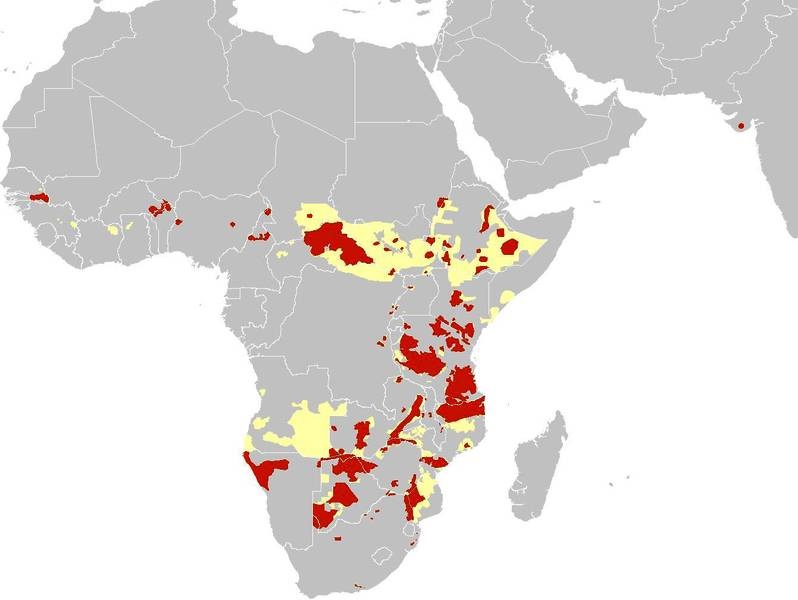Lions are in a precarious position. The IUCN/SSC Big Cat Specialist Group suggests that global lion population has declined by approximately 42% over the last 21 years.
In the early 2000’s, several initiatives estimated the population of wild lions in Africa, drawing on recent scientific surveys as well as expert opinions. Two estimates were of 22,800 individuals on one hand to 39,000 individuals. The most recent estimate is about 35,000 lions. The range of the remaining lion population is understood to be less than 20% of its former size. In West Africa they appear to have lost 99% of their former range and the fragmentation of the population is stark (see Figure 1 below). Some estimates suggest West African population to be measured at just a few hundred individuals (Chardonnet 2002; Riggio et al 2013).
Still many lion populations have yet to be properly surveyed, such that alongside known rates of decline in surveyed populations, experts consider the global lion population to be closer to 20,000 than to 30,000.

Figure 1. Distribution map of the African lion (red = extant, dark yellow = possibly extinct) (IUCN Red List 2015).
References
Chardonnet P. 2002. Conservation of the African lion: contribution to a status survey.
International Foundation for the Conservation of Wildlife, France.
Riggio J., Jacobson A., Dollar L., Bauer H., Becker M., Dickman A., Funston P. J., Groom
R., Henschel P., de Iongh H. H, Lichtenfeld L. & Pimm S. 2013. The size of savannah
Africa: a lion’s (Panthera leo) view. Biodiversity Conservation 22, 17-35
